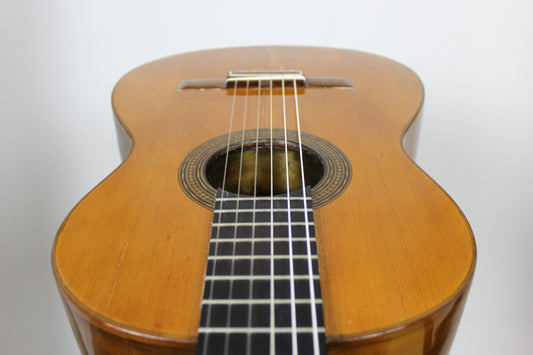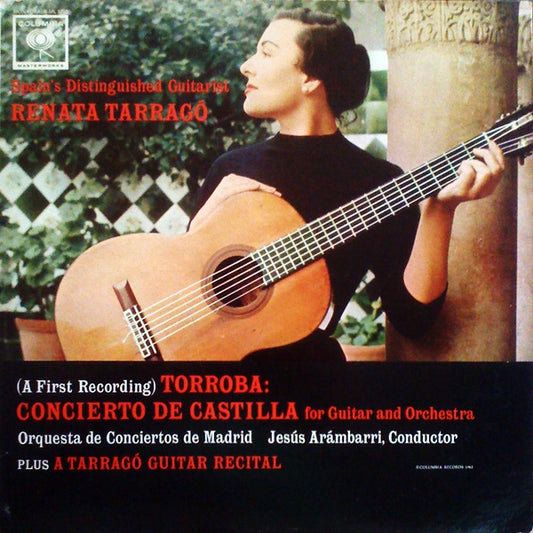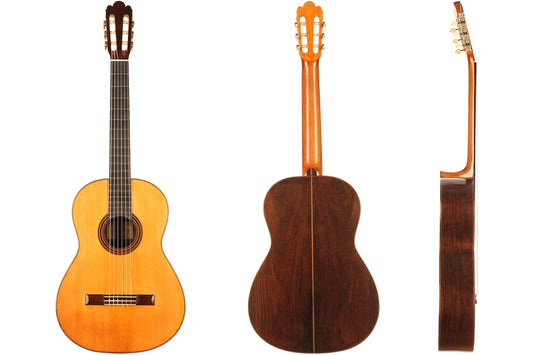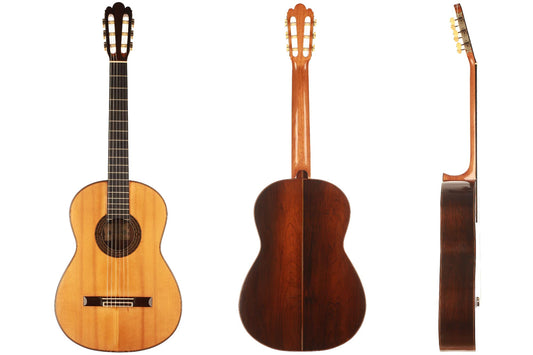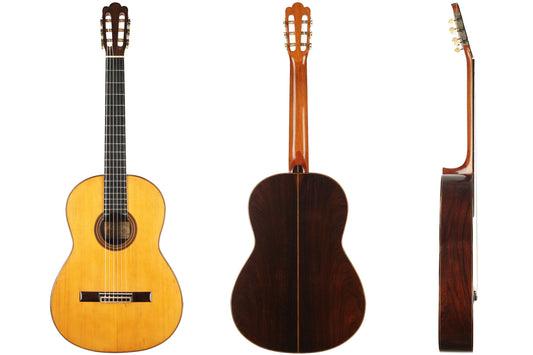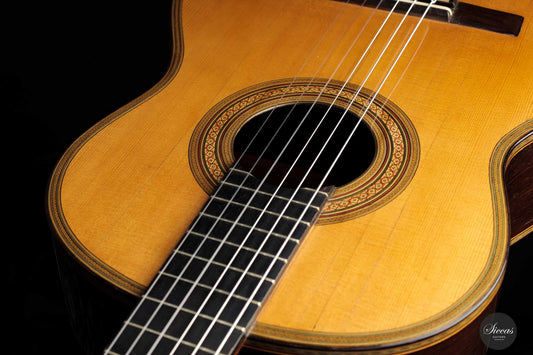Enrique Garcia
-
Luthier: Enrique GarciaLuthier: Rare Guitars
-
Luthier: Enrique GarciaLuthier: Rare GuitarsLuthier: Seltene Gitarren
-
Luthier: Enrique Garcia
-
Luthier: Enrique Garcia
-
Luthier: Enrique GarciaLuthier: Rare GuitarsLuthier: Seltene Gitarren
-
Luthier: Enrique Garcia
-
Luthier: Enrique Garcia
You may also be interested Enrique Garcia
About the Guitar Maker
Enrique García is regarded as one of the most important figures in the history of classical guitar making, known for his masterful craftsmanship, tonal excellence, and dedication to perfection. His instruments, celebrated for their beauty and sound, continue to captivate musicians and collectors around the world more than a century after their creation.
Life and Background
Born in 1868 in Madrid, Enrique García began his apprenticeship with José Ramírez I. In 1893, he moved to Barcelona, where he established his own workshop and developed a distinct style that would later define the “Barcelona School” of guitar making. García’s refined sense of form and tonal design influenced many future luthiers, including Francisco Simplicio. He became known for combining the deep Spanish tonal tradition with an elegant and precise aesthetic.
Craftsmanship and Sound
García’s guitars are admired for their clear, powerful, and balanced tone—characterized by warmth, projection, and remarkable clarity. He selected only the finest tonewoods, such as spruce and rosewood, and executed every detail with exceptional precision. His instruments are instantly recognizable for their elegant proportions, meticulous bracing, and beautifully crafted rosettes.
Tradition and Innovation
While deeply rooted in Spanish tradition, Enrique García was also an innovator. He refined bracing patterns and construction techniques to enhance the response and projection of his guitars. This fusion of traditional craftsmanship and forward-thinking design made him one of the early pioneers of the modern concert guitar.
Influence and Legacy
García’s influence extended far beyond his own workshop. His instruments served as models for later luthiers, shaping the evolution of the classical guitar throughout the 20th century. The Catalan School of luthiery, particularly in Barcelona, owes much of its foundation to his work. His guitars were played by leading performers of his time and remain prized by collectors and museums worldwide.
Conclusion
Enrique García (1868–1922) was not only a master craftsman but an artist who redefined the classical guitar. His instruments represent a perfect harmony between sound, aesthetics, and soul. Through his meticulous craftsmanship and visionary spirit, García established a legacy that continues to inspire generations of luthiers and musicians around the globe.



